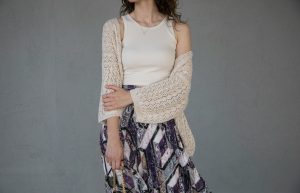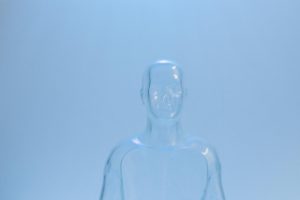Advanced Biomimetic Fashion Interfaces Inspired by Intelligence
Biomimicry, a term coined by Janine Benyus in 1997, is the process of mimicking nature’s solutions to create sustainable designs that benefit both humans and the environment. This approach has been gaining popularity in the fashion industry, where designers are looking to nature for inspiration to create innovative and eco-friendly designs. With the rise of new technologies, fashion is evolving from just being a wearable piece of fabric to a more functional and intelligent interface. In this article, we will explore the concept of Advanced Biomimetic Fashion Interfaces and how intelligence from nature is being integrated into fashion design. 
The Evolution of Fashion Interfaces
The fashion industry has come a long way from its traditional roots of manual labor and hand stitching to the use of advanced technologies such as 3D printing, smart textiles, and wearable technology. These advancements have not only improved the efficiency of the production process but have also opened up endless possibilities for creating functional and sustainable fashion designs. Biomimicry, with its focus on nature’s designs and processes, has played a significant role in this evolution of fashion interfaces.
Inspired by Nature’s Intelligence
Nature has been the best designer for millions of years, and scientists and researchers have been studying and decoding its secrets for years. With biomimicry, fashion designers are now incorporating nature’s intelligence into their designs. By observing and studying the structure, patterns, and functions of plants and animals, they are able to create more sustainable and intelligent fashion interfaces.
Advanced Biomimetic Fashion Interfaces
Advanced Biomimetic Fashion Interfaces are a step ahead of the traditional wearable technology and smart textiles. They are intelligent designs inspired by nature that go beyond just enhancing the aesthetics of fashion. These interfaces are not only visually appealing but also have functional and sustainable benefits. Designers are using biomimicry to create clothes that can perform activities such as self-healing, self-cleaning, and adjusting to body temperature, among others. These interfaces are not only beneficial for the wearer but also for the environment, as they reduce the need for chemical treatments and energy consumption.
Examples of Advanced Biomimetic Fashion Interfaces
A lot of research and innovation has been taking place in this field, and we are already seeing some remarkable examples of Advanced Biomimetic Fashion Interfaces in the market. For instance, the Adidas Futurecraft Biofabric shoes, which were influenced by spider silk, are completely biodegradable and sustainable. Another example is the Biosuit, a spacesuit designed by MIT researchers that mimics the movements of human skin and muscles to provide the wearer with more flexibility and comfort.
Challenges and Opportunities
Despite the numerous benefits of Advanced Biomimetic Fashion Interfaces, there are still challenges that need to be addressed. Designers need to find a balance between technology and sustainability, while also considering the end-of-life disposal of these interfaces. Another challenge is the scalability of production. As these designs use natural and biological materials, mass production can be a challenge. However, these challenges also present opportunities for further research and innovation in this field.
In Conclusion
Advanced Biomimetic Fashion Interfaces are opening up new possibilities for creating functional and sustainable fashion designs. By taking inspiration from nature’s intelligence, fashion is evolving into a more intelligent and eco-friendly industry. However, with this exciting evolution comes the responsibility to address the challenges and ensure that these interfaces are beneficial for both humans and the environment. As the fashion industry continues to embrace biomimicry, we can expect to see more advanced and intelligent designs in the near future that will change the way we think about fashion.











